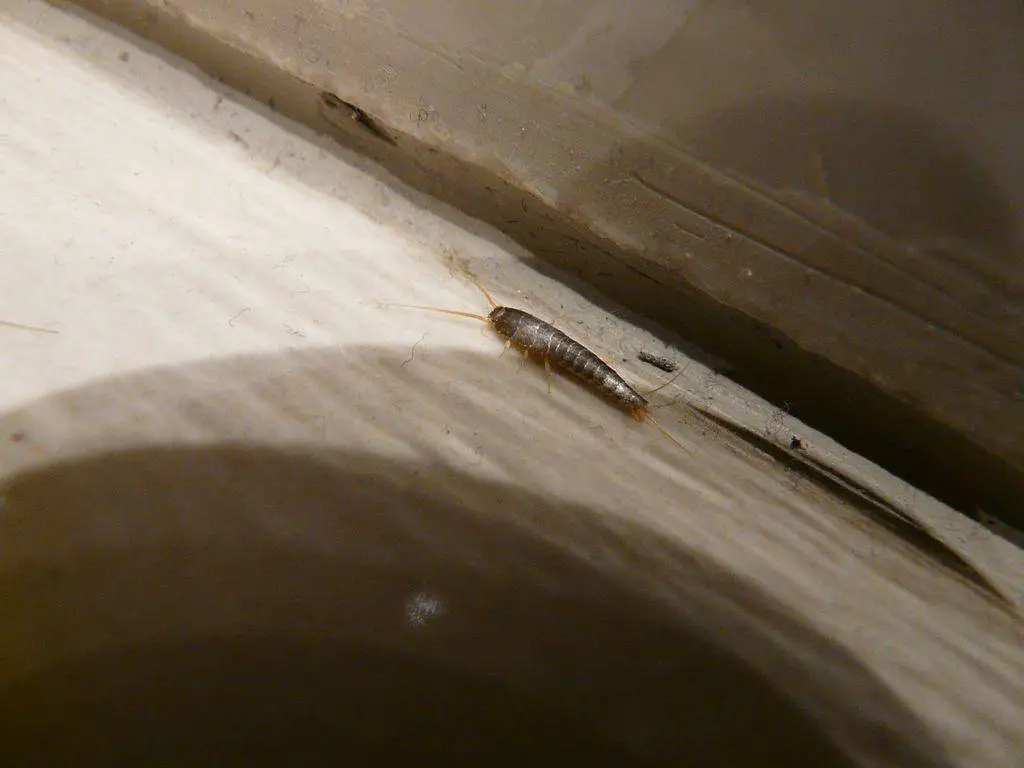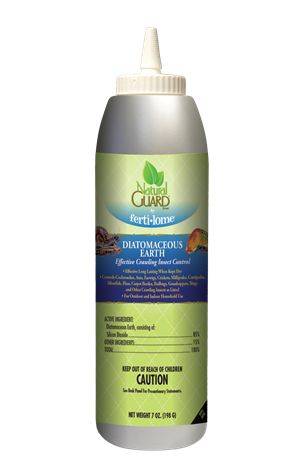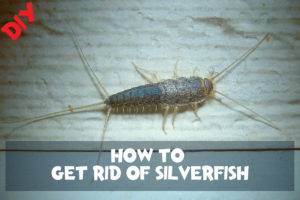If your house has an attic, or lots of books, you will probably encounter silverfish. In this guide, I’ll teach you how to get rid of silverfish.
To get rid of silverfish, fix humidity issues, and seal potential entry points and hiding spots. Place sticky traps at places where the silverfish might be hiding, and treat infested insulation material and mattresses with diatomaceous dusts. Residual spray along perimeters prevents silverfish from migrating indoors.
Continue reading to understand more.
Introduction to Silverfish as Pests

Silverfish is a primitive insect also known as the bristletail. They have a gray, flattened body. Certain outdoor species are dark brown in color.
Silverfish feed mainly on starchy materials, such as papers, glue used to bind books, rayon clothes, linen, and cereals, but also eat dead insects.
Silverfish are nocturnal, and they spend most of their time hiding. They are generally found when doing spring cleaning – the only moment when you move otherwise untouched things in your house.
Most indoor silverfish species require high humidity to survive, while outdoor species can tolerate slightly lower humidity.
Silverfish don’t bite or sting. They may cause allergic reactions, though.
Signs of Silverfish Infestation
Silverfish are cryptic creatures. You might not even know they exist in your house until you see them. But, there are some tell-tale signs that you can look for.
If you see irregular holes on your fabric, clothes, wallpapers, books, mattresses, and insulation materials, you might have a silverfish infestation.
Where do Silverfish Hide?
Silverfish usually hide near their food source. They can be found in books, cartons, papers, sofa, mattress, closet, basement, and cracks and crevices. They can also be found in attics, where they feed on the insulation materials and stored items.
What Attract Silverfish?
Silverfish are attracted by availability of food, excessive moisture, and room temperature.
Silverfish cannot survive cold temperatures. They stop growing if the temperature falls below 68 °F, and die if it goes down further. In fall or winter, outdoor silverfish may move into your house because it is warmer inside.
Once they’ve moved in and found spots with high humidity, they will stay. Many of our essential belongings, such as books, mattresses, and clothes, are good food sources for silverfish.
How to Prevent Silverfish
Reduce Food Sources
There are a lot of items in our house that serve as food for silverfish. It is impractical to remove some of those items. But, if you need to store those items (such as books, documents, and clothes), use plastic storage bins instead of carton boxes. Silverfish can eat through carton boxes and subsequently damage your items.
Make sure you clean food spillage before the end of the day, and store food in airtight containers. Silverfish can also consume human food, such as cereals and meats.
Outdoors, silverfish can be found in leaf litters and woods. Clear those things, or keep them at least 6 ft away from your house.
Fix Excessive Humidity
Addressing excessive humidity makes your house unfavorable for the silverfish. Fix leaking pipes, water seepage and condensation issues ASAP, or you will invite not only silverfish, but also booklice, termites, carpenter ants and other pests. Moreover, high humidity is bad for your health.
You can use a dehumidifier to keep the room humidity between 30-50%. In closed places, like the closets and cabinets, hang desiccants to keep dry.
Humidity issues can also be fixed by improving ventilation. Keep the windows or doors opened, turn on the fan, or run an air-conditioner if your house is too humid.
Deny Entry
Silverfish have slender bodies. They can easily squeeze through small gaps and infiltrate your house. Seal all the cracks and crevices on walls and foundations using putty or caulking. Consider installing door sweeps to prevent silverfish from entering your house.

How to Kill Silverfish?
If you have an existing silverfish infestation at home, you may have to kill or remove them. Treatment is usually easy and cheap.
Sticky Traps
Sticky traps are the best tool to get rid of silverfish if you can’t locate them. Place them in attics, inside storage boxes, and places where you’ve spotted silverfish.
For preventive trapping (ie. you aren’t sure whether there is silverfish), use any sticky traps. Place them at dark places and corners where silverfish may be hiding.
The more traps you lay, the higher the chances of catching silverfish. Having said that, do not rely fully on sticky traps to eliminate silverfish as it will disappoint you.
Sprinkle Natural Diatomaceous Earth
Diatomaceous earth is a non-toxic, naturally occurring matter, and it is proven safe and effective in killing silverfish. Upon contact, it damages the exoskeleton of the silverfish, causing excessive water loss and ultimately death.

I recommend using Natural Guard Diatomaceous Earth. Apply a coating of diatomaceous earth on places where you find silverfish, at corners of dark places, in attics, attic insulation, on carton boxes, or directly onto the silverfish.
Note that diatomaceous earth works only when it is dry. Do not put at places susceptible to water.
Essential Oil-based Products

Essential oils can kill silverfish. Spray directly onto the silverfish and their hiding spots such as cracks and crevices and behind baseboards. Direct contact kills the silverfish and their eggs.
However, you avoid using those essential oils meant for aromatherapy. They are formulated for aromatherapy purposes (eg. volatility, concentration), not for killing silverfish. Moreover, they can be expensive.
I recommend using Nature-Cide to kill silverfish. It contains a blend of cottonseed and clove oils that can be used to treat silverfish and other insect pests.
While this product leaves some aroma, it doesn’t repel silverfish. It is also noteworthy that the spray does not have any residue effect, that means it doesn’t kill once it dries up.
Final Words
Getting rid of silverfish is something homeowners can do easily. If you can’t handle the infestation though, make sure you get help from a pest control service provider. You can get a non-obligatory quote from your local service providers on Networx.
Lastly, do share my blog if you find it helpful!
Additional Information
Are home remedies effective to get rid of silverfish?
Vinegar, pepper, onion, etc. are often touted as home remedies capable of getting rid of centipedes. They might repel silverfish to a certain extent, but the silverfish will just move from 1 spot in your house to another spot.
Can I get rid of silverfish using boric acid?
Yes, you can. Like diatomaceous earth, boric acid can be dusted on the silverfish, or at places with silverfish activities to kill them. It is slow acting and works best when dry.
Can I get rid of silverfish using mothballs?
Yes, you can! Mothballs can serve as a deterrent and even eliminate certain pests like silverfish, thanks to the toxic vapor they release. However, it is not advisable to use mothballs if you have children or pets at home, as they pose a significant danger.
Mothballs work best when placed in a confined space, such as inside a box containing silverfish-infested item. That allows the toxic vapor to accumulate so that it can reach the lethal concentration. It is least effective when used in open space.
The majority of mothballs contain 1,4-dichlorobenzene, a substance classified as carcinogenic. Some mothballs may also contain camphor or naphthalene, which can be fatal if accidentally ingested by curious toddlers or pets.
Lastly, it is essential to note that mothballs are highly flammable and should be handled with utmost caution.


